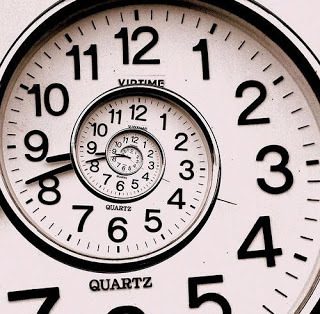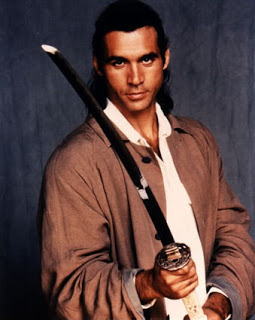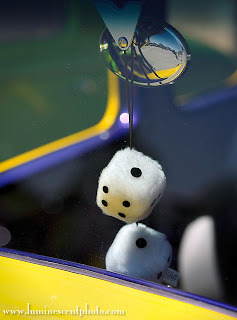Terry Odell's Blog, page 279
June 21, 2011
Aiming for the Heart
Today, help me welcome author Ellis Vidler to Terry's Place. She has a giveaway, so read through to see how to enter to win.
 Do you ever shed tears as you write? Not from frustration when something doesn't work or you realize you have to scrap fifty pages of blood and sweat, but because something you've written strikes a chord emotionally? Author Ellis Vidler laughs, cries, and double checks the locks when she writes. She identifies with her characters.
Do you ever shed tears as you write? Not from frustration when something doesn't work or you realize you have to scrap fifty pages of blood and sweat, but because something you've written strikes a chord emotionally? Author Ellis Vidler laughs, cries, and double checks the locks when she writes. She identifies with her characters.
Remember the movie Romancing the Stone? In one of the first scenes, Kathleen Turner sits at her desk in her pajamas, clicking out the last chapter of her novel and weeping into an endless supply of tissues. She's writing from the heart and feels every word. Turner's tears may have been slightly exaggerated, but most of us have cried over books and movies or even a tragic or touching picture on the news. Ellis certainly has.
That's what writers do--aim for the heart. Elmore Leonard said that. If a scene touches someone, it will stick with the reader. Strong emotions create strong memories. That's why we read, isn't it? To experience something outside ourselves. The purpose of fiction is to evoke emotion.
So how does one do that? Not by telling the reader it's a sad situation or that Isobel is heartbroken. No, the writer has to show us, take us into the character's heart so we feel what she or he is feeling. Create a situation that shows something on a higher plane than we experience daily, an act of courage, generosity, or perhaps sacrifice. If the writer has made us care about a character and we understand what something means to that character, then we're prepared to share his or her emotions. If we come to know a child and how much she loves her kitten, then see the child cradling the kitten's dead body, most of us will feel the child's pain. We don't have to be told the child is sad or that she's crying. Actually, telling us would probably lessen what we feel because it puts distance between us and the character. It puts us on the outside.
To show something, the writer must take us inside the character's head and heart. If she smells a flower, the reader should mentally inhale. If he feels cold steel pressed against his neck, the reader should experience a chill. That's when a writer is doing her job.
I believe the writer must be emotionally involved in what's happening. I admit it--I've cried over scenes I've written. And those are the stories I love most. Whether others will feel the same way is another matter. I can tell you that if I don't feel it, you won't either. You must love your characters or at least feel strongly about them. You could loathe her as long as you care deeply. Do you really, really want to see her get her comeuppance? Then show the reader the same things about her that you dislike so. Don't tell us she's mean, let us see her trip the elderly man or lie about the teacher's behavior. Show, don't tell.
Ellis is giving away a download of Haunting Refrain to one commenter. Winner announced this weekend, so leave your comment and check back to see if you're the lucky one.
Ellis Vidler is the author of Haunting Refrain, romantic suspense, and co-author of The Peeper a suspense novel, with Jim Christopher. Her new romantic suspense, Cold Comfort, is due out this year from Echelon Press. You can find Ellis at http://www.ellisvidler.com or on Facebook and Twitter. Her blog is The Unpredictable Muse.
Image credit: Sad by worradmu
 Do you ever shed tears as you write? Not from frustration when something doesn't work or you realize you have to scrap fifty pages of blood and sweat, but because something you've written strikes a chord emotionally? Author Ellis Vidler laughs, cries, and double checks the locks when she writes. She identifies with her characters.
Do you ever shed tears as you write? Not from frustration when something doesn't work or you realize you have to scrap fifty pages of blood and sweat, but because something you've written strikes a chord emotionally? Author Ellis Vidler laughs, cries, and double checks the locks when she writes. She identifies with her characters.Remember the movie Romancing the Stone? In one of the first scenes, Kathleen Turner sits at her desk in her pajamas, clicking out the last chapter of her novel and weeping into an endless supply of tissues. She's writing from the heart and feels every word. Turner's tears may have been slightly exaggerated, but most of us have cried over books and movies or even a tragic or touching picture on the news. Ellis certainly has.
That's what writers do--aim for the heart. Elmore Leonard said that. If a scene touches someone, it will stick with the reader. Strong emotions create strong memories. That's why we read, isn't it? To experience something outside ourselves. The purpose of fiction is to evoke emotion.
So how does one do that? Not by telling the reader it's a sad situation or that Isobel is heartbroken. No, the writer has to show us, take us into the character's heart so we feel what she or he is feeling. Create a situation that shows something on a higher plane than we experience daily, an act of courage, generosity, or perhaps sacrifice. If the writer has made us care about a character and we understand what something means to that character, then we're prepared to share his or her emotions. If we come to know a child and how much she loves her kitten, then see the child cradling the kitten's dead body, most of us will feel the child's pain. We don't have to be told the child is sad or that she's crying. Actually, telling us would probably lessen what we feel because it puts distance between us and the character. It puts us on the outside.
To show something, the writer must take us inside the character's head and heart. If she smells a flower, the reader should mentally inhale. If he feels cold steel pressed against his neck, the reader should experience a chill. That's when a writer is doing her job.
I believe the writer must be emotionally involved in what's happening. I admit it--I've cried over scenes I've written. And those are the stories I love most. Whether others will feel the same way is another matter. I can tell you that if I don't feel it, you won't either. You must love your characters or at least feel strongly about them. You could loathe her as long as you care deeply. Do you really, really want to see her get her comeuppance? Then show the reader the same things about her that you dislike so. Don't tell us she's mean, let us see her trip the elderly man or lie about the teacher's behavior. Show, don't tell.
Ellis is giving away a download of Haunting Refrain to one commenter. Winner announced this weekend, so leave your comment and check back to see if you're the lucky one.
Ellis Vidler is the author of Haunting Refrain, romantic suspense, and co-author of The Peeper a suspense novel, with Jim Christopher. Her new romantic suspense, Cold Comfort, is due out this year from Echelon Press. You can find Ellis at http://www.ellisvidler.com or on Facebook and Twitter. Her blog is The Unpredictable Muse.
Image credit: Sad by worradmu
Published on June 21, 2011 05:00
June 20, 2011
Hints for Public Speaking
On Saturday, I was at a local library speaking to a book club about writing. Speaking in public isn't a major problem for me. I was a teacher for many years and am used to talking to groups. But I know there are some who dread having to address others.
 What I've found helpful.
What I've found helpful.
1. Have an idea of your audience. Since the person who invited me to speak is an aspiring writer, it was quite possible that there would be both readers and writers in the group, even though it was a book club. If you think you'll have a mixed group, try to have some brief words to cover both contingencies. I have two basic "programs" – one geared to readers, and one geared to aspiring writers. Neither is particularly in depth, but they each provide talking points. Readers made up the majority of my audience, but I talked about my 'beginning writer' handout as well, explaining that as readers, they might not be aware of what's 'behind the scenes' on the page, but they might like to watch for some of these points as they read.
2. Get there early so you know what kind of space they've allotted for you. Depending on the size of the group, you may be seated at the front of rows of chairs, or they may have a podium set up. Or a microphone. If that's the case, you'll have to remember to speak into it so your voice doesn't fade in and out. Also, greet people as they arrive. Don't hide until you're introduced. The idea is to be a "real" person, not someone who's too important to mingle.
3. Have handouts. I had bookmarks, business cards, a sheet of paper with a brief bio and covers of all my books, and CHOCOLATE.
4. Start with an informal introductory chat. I ask the audience how many are readers, how many are writers, and adjust how much time I'm going to spend on my reader vs my writer points. From there, I generally give my "how I became a writer by mistake" story, which is informal and (at least I hope) engages the audience.
5. If you're going to read something (and I rarely, if ever, read from my books, but I do have my 2 character "job interviews" with Ryan & Frankie that I will present to a writer's group) there are a few things to do.
a) Print it in a LARGE font so you can read it easily and not lose your place. You'll want to be able to make frequent eye contact with members of the audience.
b) PRACTICE. No matter how dumb you think you sound, read it aloud and see where you stumble, or where you need to pause for breath. When we write, we don't really write it with reading aloud in mind. Also, read it for time, so you know how long you expect your audience to listen without any interaction. And, if you're familiar with the piece, you'll be able to make that eye contact more often. Nothing puts an audience to sleep faster than someone reading without engaging them.
c) Go slower than you think you need to. You've read it and heard it before—and by now, probably a LOT since you've been practicing. Don't rush through it. Ears don't work the same way as eye.
6. Allow lots of time for questions. And don't be afraid to use examples from your own books (you ARE speaking to help people learn who you are, and just maybe, try one of your books, right?) But don't use only your own work. Use other examples from authors as well. Caveat: Try not to let one person dominate the Q&A, especially if they're clearly looking for advice that's personal to them. You might suggest that they speak to you after your talk.
7. HAVE FUN.
Tomorrow, my guest is Ellis Vidler. She's going to be writing about Aiming For The Heart. Plus, she's got a giveaway. Plan to be here.
 What I've found helpful.
What I've found helpful.1. Have an idea of your audience. Since the person who invited me to speak is an aspiring writer, it was quite possible that there would be both readers and writers in the group, even though it was a book club. If you think you'll have a mixed group, try to have some brief words to cover both contingencies. I have two basic "programs" – one geared to readers, and one geared to aspiring writers. Neither is particularly in depth, but they each provide talking points. Readers made up the majority of my audience, but I talked about my 'beginning writer' handout as well, explaining that as readers, they might not be aware of what's 'behind the scenes' on the page, but they might like to watch for some of these points as they read.
2. Get there early so you know what kind of space they've allotted for you. Depending on the size of the group, you may be seated at the front of rows of chairs, or they may have a podium set up. Or a microphone. If that's the case, you'll have to remember to speak into it so your voice doesn't fade in and out. Also, greet people as they arrive. Don't hide until you're introduced. The idea is to be a "real" person, not someone who's too important to mingle.
3. Have handouts. I had bookmarks, business cards, a sheet of paper with a brief bio and covers of all my books, and CHOCOLATE.
4. Start with an informal introductory chat. I ask the audience how many are readers, how many are writers, and adjust how much time I'm going to spend on my reader vs my writer points. From there, I generally give my "how I became a writer by mistake" story, which is informal and (at least I hope) engages the audience.
5. If you're going to read something (and I rarely, if ever, read from my books, but I do have my 2 character "job interviews" with Ryan & Frankie that I will present to a writer's group) there are a few things to do.
a) Print it in a LARGE font so you can read it easily and not lose your place. You'll want to be able to make frequent eye contact with members of the audience.
b) PRACTICE. No matter how dumb you think you sound, read it aloud and see where you stumble, or where you need to pause for breath. When we write, we don't really write it with reading aloud in mind. Also, read it for time, so you know how long you expect your audience to listen without any interaction. And, if you're familiar with the piece, you'll be able to make that eye contact more often. Nothing puts an audience to sleep faster than someone reading without engaging them.
c) Go slower than you think you need to. You've read it and heard it before—and by now, probably a LOT since you've been practicing. Don't rush through it. Ears don't work the same way as eye.
6. Allow lots of time for questions. And don't be afraid to use examples from your own books (you ARE speaking to help people learn who you are, and just maybe, try one of your books, right?) But don't use only your own work. Use other examples from authors as well. Caveat: Try not to let one person dominate the Q&A, especially if they're clearly looking for advice that's personal to them. You might suggest that they speak to you after your talk.
7. HAVE FUN.
Tomorrow, my guest is Ellis Vidler. She's going to be writing about Aiming For The Heart. Plus, she's got a giveaway. Plan to be here.
Published on June 20, 2011 04:00
June 17, 2011
Friday Field Trip - Mountain Springtime
Spring seems to arrive late up here in the mountains. However, when it arrives, it arrives FAST.
I took these shots of the aspen trees from our deck each morning, starting May 29th. You can almost watch them leaf out.
Day 1

Day 2

Day 3

Day 4

Day 5

And while we don't have the "pretty" spring flowers like tulips and daffodils (we didn't have them in Orlando either, so it's not something I miss) we do have local wildflowers that pop up.





Enjoy your weekend, and Happy Father's Day to all the dads out there.
I took these shots of the aspen trees from our deck each morning, starting May 29th. You can almost watch them leaf out.
Day 1

Day 2

Day 3

Day 4

Day 5

And while we don't have the "pretty" spring flowers like tulips and daffodils (we didn't have them in Orlando either, so it's not something I miss) we do have local wildflowers that pop up.





Enjoy your weekend, and Happy Father's Day to all the dads out there.
Published on June 17, 2011 04:00
June 16, 2011
Numbers and Time Sucks
What I'm reading: My Sunshine, by Catherine Anderson
Don't forget my buy 1 get 1 free sale. Check the Deals and Steals tab for details.
 I was talking about sales figures yesterday, and numbers and stats are stuck in my brain. A while back, I did a post on Time Management, and I illustrated it with the image you see here.
I was talking about sales figures yesterday, and numbers and stats are stuck in my brain. A while back, I did a post on Time Management, and I illustrated it with the image you see here.
About two or three weeks ago, I noticed my blog site hits had doubled. A little digging seemed to indicate that there was a link to that blog page when people searched Google images. So I had a lot of hits, but they were simply clicking onto that page and then out again. Were they doing me any good. Not really, other than boosting my visibility on search engines for a while.
During that time, I noticed that my "Klout" score and my "Technorati authority" jumped significantly. But what do those numbers mean? I have no clue whatsoever. Nobody rang my bell, or called, or even emailed me congratulating me on having better numbers. Nobody said, "Hey, I saw your Klout and so I'm going to follow your blog, read your books, shout it from the rooftops."
And now that whatever that phenomenon was, someone else quite likely used that same image and now their blog is getting all the action. My numbers are back where they were before. Should I be depressed? Or care?
As I mentioned yesterday, being your own publisher lets you track sales figures immediately. The trick is to keep from clicking over to all the stores every half hour to see if you sold any more books. That's as bad as spending all day on Twitter or Facebook. Do you check Goodreads to see if anyone else has added one of your books to their "to read" shelf? And what if they have? I've looked at some of those lists. I can tell you, it doesn't give me warm fuzzies to know that my book is one of 15,362 on someone's list.
Is it worth your time to keep checking numbers? And there are a lot you can check. How many followers to you have on Twitter, or friends on Facebook. How many people clicked the "like" button on each of your books' Amazon pages? Or the one on this blog?
I can tell how many people clicked my Deals and Steals tab, and I can compare it with how many people actually take advantage of my sale. Is it a productive use of my time? I don't think so. And, when the ratio of clicks to actual buyers is low, it's depressing as well, which also impacts productivity.
If all these stat numbers go up, how "good" a thing is it? Of course, if it's sales figures, yes, it's a good thing because you're writing books to sell them. But those numbers will still be there an hour from now, or tomorrow. If you're writing, the best numbers to track are word counts. Because that's what's going to add another number to your "books for sale" stats.
And if anyone can explain Technorati or Klout to me, and tell me what their scores really mean in terms of my life and my writing, I'll be forever grateful.
Have a great weekend. I'm giving a talk at a local Library on Saturday. On Sunday a friend I haven't seen since high school will be coming up with her husband for a brief visit, and it's Father's Day.
Don't forget my buy 1 get 1 free sale. Check the Deals and Steals tab for details.
 I was talking about sales figures yesterday, and numbers and stats are stuck in my brain. A while back, I did a post on Time Management, and I illustrated it with the image you see here.
I was talking about sales figures yesterday, and numbers and stats are stuck in my brain. A while back, I did a post on Time Management, and I illustrated it with the image you see here.About two or three weeks ago, I noticed my blog site hits had doubled. A little digging seemed to indicate that there was a link to that blog page when people searched Google images. So I had a lot of hits, but they were simply clicking onto that page and then out again. Were they doing me any good. Not really, other than boosting my visibility on search engines for a while.
During that time, I noticed that my "Klout" score and my "Technorati authority" jumped significantly. But what do those numbers mean? I have no clue whatsoever. Nobody rang my bell, or called, or even emailed me congratulating me on having better numbers. Nobody said, "Hey, I saw your Klout and so I'm going to follow your blog, read your books, shout it from the rooftops."
And now that whatever that phenomenon was, someone else quite likely used that same image and now their blog is getting all the action. My numbers are back where they were before. Should I be depressed? Or care?
As I mentioned yesterday, being your own publisher lets you track sales figures immediately. The trick is to keep from clicking over to all the stores every half hour to see if you sold any more books. That's as bad as spending all day on Twitter or Facebook. Do you check Goodreads to see if anyone else has added one of your books to their "to read" shelf? And what if they have? I've looked at some of those lists. I can tell you, it doesn't give me warm fuzzies to know that my book is one of 15,362 on someone's list.
Is it worth your time to keep checking numbers? And there are a lot you can check. How many followers to you have on Twitter, or friends on Facebook. How many people clicked the "like" button on each of your books' Amazon pages? Or the one on this blog?
I can tell how many people clicked my Deals and Steals tab, and I can compare it with how many people actually take advantage of my sale. Is it a productive use of my time? I don't think so. And, when the ratio of clicks to actual buyers is low, it's depressing as well, which also impacts productivity.
If all these stat numbers go up, how "good" a thing is it? Of course, if it's sales figures, yes, it's a good thing because you're writing books to sell them. But those numbers will still be there an hour from now, or tomorrow. If you're writing, the best numbers to track are word counts. Because that's what's going to add another number to your "books for sale" stats.
And if anyone can explain Technorati or Klout to me, and tell me what their scores really mean in terms of my life and my writing, I'll be forever grateful.
Have a great weekend. I'm giving a talk at a local Library on Saturday. On Sunday a friend I haven't seen since high school will be coming up with her husband for a brief visit, and it's Father's Day.
Published on June 16, 2011 04:00
June 15, 2011
Publishing: It's About Marketing
What I'm reading: Dirty, by Debra Webb.
Also, I'm revisiting my post on romantic moments over at Ellis Vidler's blog, the Unpredictable Muse today.
 Thanks to Paty for sharing her reasons for going indie with her older books. I'm in a similar situation, and understand exactly what she's talking about. In addition to publishing my back list titles, I've also taken the plunge into indie-publishing a new book. And in case you missed it, I'm offering a Buy 1, Get 1 Free sale. And, unlike the normal retailers, I'm not restricting the free book to the cheaper one. Nope. Buy the 99 cent book (When Danger Calls) and I'll give you the $2.99 book (Danger in Deer Ridge) free.
Thanks to Paty for sharing her reasons for going indie with her older books. I'm in a similar situation, and understand exactly what she's talking about. In addition to publishing my back list titles, I've also taken the plunge into indie-publishing a new book. And in case you missed it, I'm offering a Buy 1, Get 1 Free sale. And, unlike the normal retailers, I'm not restricting the free book to the cheaper one. Nope. Buy the 99 cent book (When Danger Calls) and I'll give you the $2.99 book (Danger in Deer Ridge) free.
Why? Because if you're someone starting in e-publishing, people are more likely to take a chance if you've got an established name. I don't. One of the ways to get noticed is for your books to rise in the rankings at the e-stores, and the only way to get them up there is for people to buy them or review them. So, in the hope that if I gave away books, mine would move higher up the ladder, which in turn would generate more sales, I'm willing to eat the cost of giving away books. After all, any business must have an advertising budget.
So, if you've been considering reading my Blackthorne, Inc. e-books, this would be a great time to take that next step.
As for my hard cover (Where Danger Hides), the publisher targets the library market. So, if you have a library card, I hope you'll 1) request the book if your library doesn't carry it and/or 2) check it out, even if you don't want to read it. The libraries look at the circulation records of books, and if a book looks busy, they might buy another copy.
Another difference between traditional and indie publishing is being able to track sales. If you write for a traditional publisher, you were probably paid an advance. Until you've sold enough books to cover that advance, you won't see a penny in royalties. (At least you don't have to give the money back if you don't.) After that, you'll be paid – usually twice a year—so there's no real way to tell which, if any, promotional efforts actually bear fruit.
With e-publishers, there's a little more frequency of payment. Mine come either monthly or quarterly, depending on the publisher. but they're always behind. Thus, I my June check would cover my April sales, and for those paying quarterly, I'm seeing results from the previous quarter. Marketing efforts for those books are also hard to track, although it's a little easier than with my print publisher.
On the other hand, with most of the indie-sites, such as Amazon, Smashwords, or Barnes & Noble, even though payments are delayed, you can see virtually real-time sales. If someone buys one of my books from the Amazon store, I'll know within minutes. Same goes for Smashwords. Barnes & Noble's indie publishing stats take about a day to show up. Of course, this has its ups and downs. It's nice to get feedback that a promotional effort of some sort is driving sales. If something isn't working, at least you can adjust your plan of attack much sooner.
Also, I'm revisiting my post on romantic moments over at Ellis Vidler's blog, the Unpredictable Muse today.
 Thanks to Paty for sharing her reasons for going indie with her older books. I'm in a similar situation, and understand exactly what she's talking about. In addition to publishing my back list titles, I've also taken the plunge into indie-publishing a new book. And in case you missed it, I'm offering a Buy 1, Get 1 Free sale. And, unlike the normal retailers, I'm not restricting the free book to the cheaper one. Nope. Buy the 99 cent book (When Danger Calls) and I'll give you the $2.99 book (Danger in Deer Ridge) free.
Thanks to Paty for sharing her reasons for going indie with her older books. I'm in a similar situation, and understand exactly what she's talking about. In addition to publishing my back list titles, I've also taken the plunge into indie-publishing a new book. And in case you missed it, I'm offering a Buy 1, Get 1 Free sale. And, unlike the normal retailers, I'm not restricting the free book to the cheaper one. Nope. Buy the 99 cent book (When Danger Calls) and I'll give you the $2.99 book (Danger in Deer Ridge) free.Why? Because if you're someone starting in e-publishing, people are more likely to take a chance if you've got an established name. I don't. One of the ways to get noticed is for your books to rise in the rankings at the e-stores, and the only way to get them up there is for people to buy them or review them. So, in the hope that if I gave away books, mine would move higher up the ladder, which in turn would generate more sales, I'm willing to eat the cost of giving away books. After all, any business must have an advertising budget.
So, if you've been considering reading my Blackthorne, Inc. e-books, this would be a great time to take that next step.
As for my hard cover (Where Danger Hides), the publisher targets the library market. So, if you have a library card, I hope you'll 1) request the book if your library doesn't carry it and/or 2) check it out, even if you don't want to read it. The libraries look at the circulation records of books, and if a book looks busy, they might buy another copy.
Another difference between traditional and indie publishing is being able to track sales. If you write for a traditional publisher, you were probably paid an advance. Until you've sold enough books to cover that advance, you won't see a penny in royalties. (At least you don't have to give the money back if you don't.) After that, you'll be paid – usually twice a year—so there's no real way to tell which, if any, promotional efforts actually bear fruit.
With e-publishers, there's a little more frequency of payment. Mine come either monthly or quarterly, depending on the publisher. but they're always behind. Thus, I my June check would cover my April sales, and for those paying quarterly, I'm seeing results from the previous quarter. Marketing efforts for those books are also hard to track, although it's a little easier than with my print publisher.
On the other hand, with most of the indie-sites, such as Amazon, Smashwords, or Barnes & Noble, even though payments are delayed, you can see virtually real-time sales. If someone buys one of my books from the Amazon store, I'll know within minutes. Same goes for Smashwords. Barnes & Noble's indie publishing stats take about a day to show up. Of course, this has its ups and downs. It's nice to get feedback that a promotional effort of some sort is driving sales. If something isn't working, at least you can adjust your plan of attack much sooner.
Published on June 15, 2011 04:00
June 14, 2011
Recycling My Books
Today I welcome Paty Jager to Terry's Place. Paty uses her love of the old west and ranch life to bring the characters in her historical and contemporary westerns to life. Growing up in a rural area books were her crystal ball to the world outside the secluded Wallowa valley. Her characters portray her feelings on life and love and her joy of reading.
Terry, Thank you for hosting me on your blog today.
I'd like to share with you today how I'm extending the longevity of my books and making them even more accessible to readers.
When I started writing I just wanted to put the characters in my head on paper and enjoy the process of bringing them to life on the pages. Along the way, my husband thought I should see dollars for my efforts and my friends who enjoyed the stories thought more people should enjoy them. That brought me to learning to better my craft and eventually start sending my stories to agents, editors, and contests.
I did well in most contests, usually becoming a finalist, and the rejection letters stopped being photocopied letters and said, "We like this, but…". I became frustrated that while they "liked it but", was nice, it wasn't putting my stories in front of readers.
A friend told me about a new small press that would only publish romance. I sent my first Halsey brother book to them (Marshal in Petticoats) and they contracted and asked what else I had. I had several. At the time I sent the first manuscript to Wild Rose Press, I had eight finished projects. The first three will never see the light of day, but the rest had potential. And my first contemporary western romance, written before I joined Wild Rose Press, was published by them and received an EPPIE award.
In the years following my manuscripts being contracted by WRP, the self-publishing market blossomed into something over and above vanity-publishing. Books published by the authors were making the best seller lists. Buzz started over the great books being published by authors and the quality of self-published books rose. There was no longer a stigma attached to being self-published. Ereaders became easier to use, less expensive, and the new technology toy.
With all this new ground made in the world of self-publishing, I requested the rights back to four of my books that had run the length of the contract. After revising them, some with additions I thought of after they were published and some just with new phrasing and beautiful covers fashioned by my talented daughter, I now have three books up at Kindle and Smashwords and will soon have the EPPIE award winning book there by the end of June along with a brand new historical western.
I decided with a background in editing and critique partners who find my gaps in plot and character arcs, I can do the self-publishing route and not only make more money(my husband wants me to show more profit) but be able to present my stories to readers at a reasonable cost.
I became a writer because of my love of books and stories. Self-publishing is a way to make my stories more cost efficient for the voracious reader and to have my stories available even though they don't fit neatly in the slots New York has for genre books.
If you'd like to learn more about Paty, her books, or the people she hangs out with you can stop by her website http://www.patyjager.net or her blog http://www.patyjager.blogspot.com or follow her at twitter @patyjag or on facebook https://www.facebook.com/paty.jager
Terry, Thank you for hosting me on your blog today.
I'd like to share with you today how I'm extending the longevity of my books and making them even more accessible to readers.
When I started writing I just wanted to put the characters in my head on paper and enjoy the process of bringing them to life on the pages. Along the way, my husband thought I should see dollars for my efforts and my friends who enjoyed the stories thought more people should enjoy them. That brought me to learning to better my craft and eventually start sending my stories to agents, editors, and contests.
I did well in most contests, usually becoming a finalist, and the rejection letters stopped being photocopied letters and said, "We like this, but…". I became frustrated that while they "liked it but", was nice, it wasn't putting my stories in front of readers.
A friend told me about a new small press that would only publish romance. I sent my first Halsey brother book to them (Marshal in Petticoats) and they contracted and asked what else I had. I had several. At the time I sent the first manuscript to Wild Rose Press, I had eight finished projects. The first three will never see the light of day, but the rest had potential. And my first contemporary western romance, written before I joined Wild Rose Press, was published by them and received an EPPIE award.
In the years following my manuscripts being contracted by WRP, the self-publishing market blossomed into something over and above vanity-publishing. Books published by the authors were making the best seller lists. Buzz started over the great books being published by authors and the quality of self-published books rose. There was no longer a stigma attached to being self-published. Ereaders became easier to use, less expensive, and the new technology toy.
With all this new ground made in the world of self-publishing, I requested the rights back to four of my books that had run the length of the contract. After revising them, some with additions I thought of after they were published and some just with new phrasing and beautiful covers fashioned by my talented daughter, I now have three books up at Kindle and Smashwords and will soon have the EPPIE award winning book there by the end of June along with a brand new historical western.
I decided with a background in editing and critique partners who find my gaps in plot and character arcs, I can do the self-publishing route and not only make more money(my husband wants me to show more profit) but be able to present my stories to readers at a reasonable cost.
I became a writer because of my love of books and stories. Self-publishing is a way to make my stories more cost efficient for the voracious reader and to have my stories available even though they don't fit neatly in the slots New York has for genre books.
If you'd like to learn more about Paty, her books, or the people she hangs out with you can stop by her website http://www.patyjager.net or her blog http://www.patyjager.blogspot.com or follow her at twitter @patyjag or on facebook https://www.facebook.com/paty.jager
Published on June 14, 2011 05:00
June 13, 2011
Is Your Hero Mr. Perfect?
What I'm reading: Buried Prey, by John Sandford
First – stop reading right now and click the Deals & Steals tab. I've got an offer too good to pass up. Buy a book for 99 cents and get a $2.99 book FREE. No, I didn't get it backward. Click for details.
And one more "housekeeping" item. I've had people mention that although they've been reading my blog for a while, they didn't realize that only a short piece of the post shows up on this main page. Almost all my posts have a "keep reading" prompt. I do this because I prefer to have more posts visible on my home page, but I didn't realize some people might have missed it If you're one of them, I hope you'll start clicking through to the rest of the posts.

Today's post is targeted at readers more than writers, although I don't think you can really isolate one from the other. I'd appreciate feedback from both sides.
Recently, I've read a few "straight" romance novels by best-selling, many, many books to their name authors. Maybe the reason they didn't resonate for me is because I usually read either straight mystery or romantic suspense, but I had some trouble caring about the characters—in these cases, the hero. And I wondered if I'm the only one.
We all know that writing a "TSTL" character (Too Stupid to Live) is a story killer. And, I'm assuming that even though that caveat usually comes with descriptions of heroines, I'm thinking it should also carry over to the hero. Men can be stupid, too.
But what about the character who's too good to be true? Again, this taboo seems to be something reserved for heroines. The heroine who's gorgeous, can sing, dance, is a crack shot and an expert at martial arts is scorned upon. But what about the hero?
In the books I've read that triggered this post, the heroes are handsome beyond belief, and good at their jobs. Good at their jobs isn't a bad thing. They should be at least competent in their fields. As for looks, I can accept the uber-handsome hero, although I prefer to write my heroes a shade under drop-dead gorgeous. My one exception was Blake in Nowhere to Hide, because his character originated with Duncan MacLeod in the Highlander television series, and he was drop dead gorgeous. Heck, if he hadn't been, maybe I'd never have started writing. But I digress.
These heroes in question are not only gorgeous, but they don't seem to have any character flaws. They tolerate anything the heroine does. Their primary goal seems to be to wait for the heroine to realize she loves him. They're patient beyond belief. They don't lose their tempers unless they're protecting the heroine from someone causing trouble. They don't seem to make any mistakes at all. The heroine can have relationship issues up the wazoo, but the hero simply smiles and waits.
Is it because as female readers, we're secretly looking for that Mr. Perfect? I know I prefer a hero with some kind of flaws, and that's how I write them. But these "perfect-hero" authors aren't hurting for readers, and they've got enough books written to fill several bookcases. What's your take?
Tomorrow, my guest is author Paty Jager who's writing about recyling books--and not as landfill. Come read about it.
First – stop reading right now and click the Deals & Steals tab. I've got an offer too good to pass up. Buy a book for 99 cents and get a $2.99 book FREE. No, I didn't get it backward. Click for details.
And one more "housekeeping" item. I've had people mention that although they've been reading my blog for a while, they didn't realize that only a short piece of the post shows up on this main page. Almost all my posts have a "keep reading" prompt. I do this because I prefer to have more posts visible on my home page, but I didn't realize some people might have missed it If you're one of them, I hope you'll start clicking through to the rest of the posts.

Today's post is targeted at readers more than writers, although I don't think you can really isolate one from the other. I'd appreciate feedback from both sides.
Recently, I've read a few "straight" romance novels by best-selling, many, many books to their name authors. Maybe the reason they didn't resonate for me is because I usually read either straight mystery or romantic suspense, but I had some trouble caring about the characters—in these cases, the hero. And I wondered if I'm the only one.
We all know that writing a "TSTL" character (Too Stupid to Live) is a story killer. And, I'm assuming that even though that caveat usually comes with descriptions of heroines, I'm thinking it should also carry over to the hero. Men can be stupid, too.
But what about the character who's too good to be true? Again, this taboo seems to be something reserved for heroines. The heroine who's gorgeous, can sing, dance, is a crack shot and an expert at martial arts is scorned upon. But what about the hero?
In the books I've read that triggered this post, the heroes are handsome beyond belief, and good at their jobs. Good at their jobs isn't a bad thing. They should be at least competent in their fields. As for looks, I can accept the uber-handsome hero, although I prefer to write my heroes a shade under drop-dead gorgeous. My one exception was Blake in Nowhere to Hide, because his character originated with Duncan MacLeod in the Highlander television series, and he was drop dead gorgeous. Heck, if he hadn't been, maybe I'd never have started writing. But I digress.
These heroes in question are not only gorgeous, but they don't seem to have any character flaws. They tolerate anything the heroine does. Their primary goal seems to be to wait for the heroine to realize she loves him. They're patient beyond belief. They don't lose their tempers unless they're protecting the heroine from someone causing trouble. They don't seem to make any mistakes at all. The heroine can have relationship issues up the wazoo, but the hero simply smiles and waits.
Is it because as female readers, we're secretly looking for that Mr. Perfect? I know I prefer a hero with some kind of flaws, and that's how I write them. But these "perfect-hero" authors aren't hurting for readers, and they've got enough books written to fill several bookcases. What's your take?
Tomorrow, my guest is author Paty Jager who's writing about recyling books--and not as landfill. Come read about it.
Published on June 13, 2011 04:00
June 11, 2011
And the Winners Are
The winner of Phoebe Conn's download is ... KAREN.
Karen, email Phoebe at phoebeconn (at) earthlink (dot) net so she can get your download to you.
And for those who came to the Romance Studio Release Party: My winners of downloads of WHEN DANGER CALLS are: Alyna, Cathy, Jean, Stacie, Lisa and Darcy.
Happy reading everyone!
Karen, email Phoebe at phoebeconn (at) earthlink (dot) net so she can get your download to you.
And for those who came to the Romance Studio Release Party: My winners of downloads of WHEN DANGER CALLS are: Alyna, Cathy, Jean, Stacie, Lisa and Darcy.
Happy reading everyone!
Published on June 11, 2011 04:55
June 10, 2011
Friday Field Trip: A Classic Car Show
First - don't forget to leave a comment on Phoebe Conn's Tuesday post. Today's the last day to enter. I'll announce the winner this weekend.

Next - last week, Jason wanted to know if we'd like to drive up to Loveland, Colorado for a national classic car show. Mostly, he wanted me to be a pair of eyes and hands for our grandson, but I agreed as long as he'd share his pictures. (OK, having a day with our grandson was enough, but I couldn't make it too easy.) And, for those who've come by on my Friday Field Trips, you know that Jason's going to do more than just take pictures of cars. I hope you enjoy his interpretation. And how many of these do you recognize? Or remember? Did you own any of them?













Next - last week, Jason wanted to know if we'd like to drive up to Loveland, Colorado for a national classic car show. Mostly, he wanted me to be a pair of eyes and hands for our grandson, but I agreed as long as he'd share his pictures. (OK, having a day with our grandson was enough, but I couldn't make it too easy.) And, for those who've come by on my Friday Field Trips, you know that Jason's going to do more than just take pictures of cars. I hope you enjoy his interpretation. And how many of these do you recognize? Or remember? Did you own any of them?











Published on June 10, 2011 04:00
June 9, 2011
Don't Lose your Characters
What I'm reading: Damaged, by Debra Webb
Don't forget – there's plenty of time to leave a comment on Phoebe Conn's Tuesday post to be entered in her drawing. I'll wait while you scroll down.
Meanwhile, I'm over at The Romance Studio at a release party today. I'll be in and out all day. If you're so inclined, pop on over. I'm talking about WHERE DANGER HIDES, and I'm giving away a download of WHEN DANGER CALLS.
 When writing series or connected books, there are some extra considerations, such as handling back story and keeping track of characters. And sometimes, it can get you into trouble.
When writing series or connected books, there are some extra considerations, such as handling back story and keeping track of characters. And sometimes, it can get you into trouble.
For example, in WHEN DANGER CALLS, I needed Ryan to be able to get into the Blackthorne's fancy computer system, even though he'd technically quit. It made no sense for a company like Blackthorne to have conveniently forgotten to shut down his access. (that would have been one of those handy "coincidences" I talked about in an earlier post) So, I simply gave Ryan a throwaway line:
"I sort of borrowed a login from a buddy. His fault—I kept telling Grinch to pick a smarter password than his kid's name and birthday."
So, when it became time to write Grinch's story, I was stuck with the child. And due to other plot considerations, I gave him a dog as well. While it's one thing to have a throwaway line, once a character is on the page, be it human or animal, it becomes your responsibility.
If you're going to introduce a character, you have to be ready to consider where he will be even when he's not on the page. Make it a child (or a dog) and you have other considerations, because they require tending. You can't simply send them off to work, or leave them alone in the house all day. They have to be fed, walked, whatever.
I recently read a book where the inciting incident in the first chapter involved an abused animal. The heroine rescued it and brought it to an expert. We saw the hero agree to try to undo the damage, and a brief scene where he assessed the animal. However it was over a hundred pages—maybe closer to two—before we saw him working the animal again. Since caring for the animal was the sole reason hero and heroine got together, I kept wondering what was happening. And several weeks had passed, so it wasn't a matter of a lot of other stuff going on in a short period of time.
When I use my tracking board, I try to put up Post-its for clues and when secondary characters appear in scenes, so I know whether I've dropped a thread. It's important to make sure you don't lose track of what, or who, is important. If it happens to be a pet, and you find you've neglected it, then find a way to remind yourself of its existence.
Tomorrow we're going to Loveland, Colorado for a classic car show. And you know that because it's Jason taking the pictures, they're going to be something special. Come back!
Don't forget – there's plenty of time to leave a comment on Phoebe Conn's Tuesday post to be entered in her drawing. I'll wait while you scroll down.
Meanwhile, I'm over at The Romance Studio at a release party today. I'll be in and out all day. If you're so inclined, pop on over. I'm talking about WHERE DANGER HIDES, and I'm giving away a download of WHEN DANGER CALLS.
 When writing series or connected books, there are some extra considerations, such as handling back story and keeping track of characters. And sometimes, it can get you into trouble.
When writing series or connected books, there are some extra considerations, such as handling back story and keeping track of characters. And sometimes, it can get you into trouble.For example, in WHEN DANGER CALLS, I needed Ryan to be able to get into the Blackthorne's fancy computer system, even though he'd technically quit. It made no sense for a company like Blackthorne to have conveniently forgotten to shut down his access. (that would have been one of those handy "coincidences" I talked about in an earlier post) So, I simply gave Ryan a throwaway line:
"I sort of borrowed a login from a buddy. His fault—I kept telling Grinch to pick a smarter password than his kid's name and birthday."
So, when it became time to write Grinch's story, I was stuck with the child. And due to other plot considerations, I gave him a dog as well. While it's one thing to have a throwaway line, once a character is on the page, be it human or animal, it becomes your responsibility.
If you're going to introduce a character, you have to be ready to consider where he will be even when he's not on the page. Make it a child (or a dog) and you have other considerations, because they require tending. You can't simply send them off to work, or leave them alone in the house all day. They have to be fed, walked, whatever.
I recently read a book where the inciting incident in the first chapter involved an abused animal. The heroine rescued it and brought it to an expert. We saw the hero agree to try to undo the damage, and a brief scene where he assessed the animal. However it was over a hundred pages—maybe closer to two—before we saw him working the animal again. Since caring for the animal was the sole reason hero and heroine got together, I kept wondering what was happening. And several weeks had passed, so it wasn't a matter of a lot of other stuff going on in a short period of time.
When I use my tracking board, I try to put up Post-its for clues and when secondary characters appear in scenes, so I know whether I've dropped a thread. It's important to make sure you don't lose track of what, or who, is important. If it happens to be a pet, and you find you've neglected it, then find a way to remind yourself of its existence.
Tomorrow we're going to Loveland, Colorado for a classic car show. And you know that because it's Jason taking the pictures, they're going to be something special. Come back!
Published on June 09, 2011 04:00



